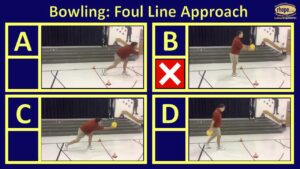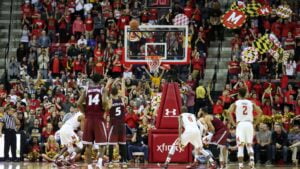Five Ways to Get to the Foul Line
Free throws and lay-ups win games. It is that simple. Three have their role, dunks are crowd pleasers and two’s from the low post and mid-range add up. But free throws and lay-ups decide the outcome of games.
It’s not just the points from the free throws, mind you, that impact the outcome of the game. The impact of the fouls that create the free throw opportunities plays a large role in the outcome of the game.
Good offense, both zone attack and man-to-man, includes a plan to draw fouls.
Fouls negatively impact a TEAM by:
- Allowing the opponent to score with the clock stopped.
- Allow the opponent to substitute.
- Allow the opponent to set up a pressing defense without fear of a quick transition off the free throw.
- Can reduce the playing time of a key player due to personal foul totals.
- Can limit the aggressiveness of a TEAM due to total TEAM fouls.
- Can limit the aggressiveness of an individual player due to personal foul totals.
- Can allow the opponent to protect a lead.
- Can increase a made basket with a foul by one point.
Given all of the benefits of getting an opposing TEAM and individual opponents to foul, it is well worth the time and emphasis to teach players how to draw fouls.
While a free throw is not awarded, the best strategic foul that can be drawn is a charge. A quick rundown on why includes the following reasons:
- Drawing a charge negates a basket.
- The TEAM who drew the charge is awarded the ball.
- The individual who committed the charge is assessed a personal foul.
- The TEAM that committed the charge receives an additional foul for the TEAM foul total.
- TEAMS that consistently draw charges successfully can intimidate and physically negate great penetrating TEAMs and players with excellent penetration skills.
Ways to draw fouls other than drawing a charge include:
- Use of the shot fake.
- Penetration into the lane/to the rim.
- Establishing a position first and holding it legally.
- Entering the ball into the post.
- Obtaining an offensive rebound.
One of the most underutilized dills on offense is the shot fake and pass fake. Shot fakes should only be two inches of ball movement with no uncoiling of the legs.
The offensive player must “sell the fake” with his/her eyes and wait until the defender leaves the ground before initiating the shot. If possible, the offensive player should initiate physical contact to draw the foul.
However, understand this could lead to an offensive foul being called on the shooter. If the defender is vertical in all aspects no contact should be made. If the defender is off the vertical plane, particularly his/her arms, in any way, contact should be made as the official will call a foul on the defensive player.
Penetration to the lane forces the defense to collapse. Simply increasing the number of bodies in a fixed and limited space will increase the likelihood of physical contact. Penetrating to the rim with defense present will nearly always draw a foul.
The rim is the most important area on the court defensively and will draw a crowd in a hurry. The ability of a player to get to the rim and score a lay-up not only results in a two-point goal, but it creates opportunities to pass the ball for three-point shot attempts and post-scoring opportunities.
All of these reasons place pressure on the defense to prevent penetration to the rim area, increasing the likelihood of a foul being committed.
position first and holding it allows the offense to receive a pass and often forces the defense to make contact to attempt to deflect the pass or defend after the ball’s arrival.
Establishing position first and holding it allows the offense to receive a pass and often forces the defense to make contact to attempt to deflect the pass or defend after the ball’s arrival.
Entering the ball into the post combines two earlier concepts, penetration into the lane (via a pass) and establishing position first and holding it. The offensive low post is a high-percentage scoring area and the defense will go to great lengths to protect it.
Once the ball is in the low post the defense must crowd the low post player, increasing the number of players in a fixed limited area. Holding an established position puts the defense at a disadvantage.
Finally, using the shot fake for a low post shot almost always ensures a foul will be called if the post player is a skilled scorer.
Obtaining an offensive rebound combined with a shot fake will almost always draw a foul. The defense is in a very poor position and most offensive rebounds are obtained in a high percentage area of the court in terms of shooting.
Teams who consistently practice foul discipline have low TEAM foul totals and run an offensive system that emphasizes drawing fouls and has a significant advantage in every game.


